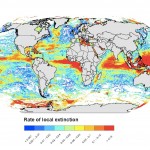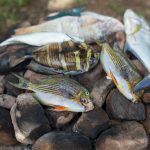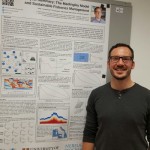This post was originally published on the new Madingley model website by Nereus Fellow Phil Underwood. The Nereus Program is a partner of Madingley.

Madingley is a global computational model. To a broad approximation, the Madingley model represents all (most) forms of life. It achieves this by using what’s called a functional-type representation. Species are aggregated in to broad categories that describe a select number of their properties, rather than everything about them. For some, this conceptual leap is too much. Why take a step towards representing all life, but miss the explicit inclusion of species? The answer lies in making the best of human knowledge, and balancing computational expense.
Another essential feature of Madingley is its individual- or agent-based representation. I’ll come back to why that’s interesting in a moment. For now, let me point out that model individuals carry all the information about their current state, and potentially even a record of their entire life history. These pieces of information take up space in computer memory, and require time to process. When summed over thousands or even millions of interacting agents, individual-based models can become very expensive. Computational power has only recently become accessible enough that it’s feasible to explicitly represent millions of agents in a model. For this reason, it’s necessary to exclude as much irrelevant information as possible. In this way, individual-based modelling and functional-type representations go hand-in-hand. So what is the benefit of this approach? Why diverge from well-established methods?
Read the full post on the Madingley website.
 PHIL UNDERWOOD, PHD, THEORETICAL ECOLOGY
PHIL UNDERWOOD, PHD, THEORETICAL ECOLOGY
Cambridge/WCMC
Phil Underwood works with the Madingley model to validate its use as a policy informing tool in relation to fisheries and food security. As a member of the Nereus Program, Underwood will be working to better understand the relationship between oceanic ecosystems and human societies. To this end he will improve the ecological realism of the Madingley Model in order to generate future projections of fisheries in a global context.








